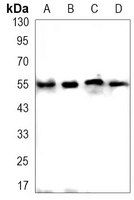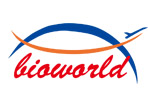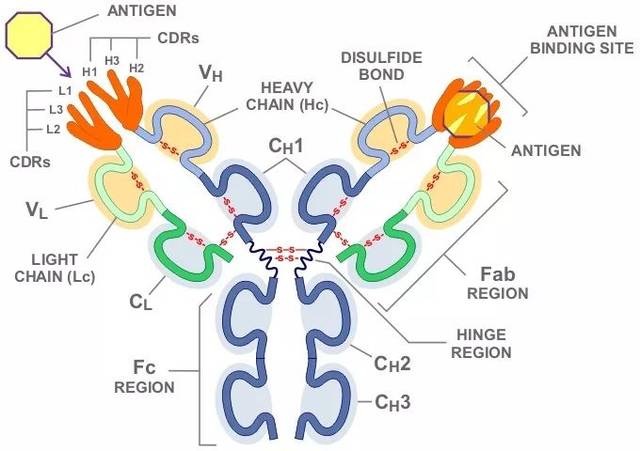Product Name :
DFNA5 Rabbit monoclonal antibody Background :
The gasdermin family that includes GSDMA, GSDMB, GSMDC, GSDMD, and GSDME have been shown to play a role in inflammation and cell death. Gasdermin D has been reported to have a critical role as a downstream effector of pyroptosis. Pyroptosis is a lytic type of cell death triggered by inflammasomes, multiprotein complexes assembled in response to pathogen-associated molecular patterns (PAMPs) or danger-associated molecular patterns (DAMPs) that result in the activation of caspase-1 and subsequent cleavage of pro-inflammatory cytokines IL-1β and IL-18. Gasdermin D was identified by two independent groups as a substrate of inflammatory caspases, caspase-1 and caspase-11/4/5, producing two fragments: GSDMD-N and GSDMD-C. Cleavage results in release of an intramolecular inhibitory interaction between the N- and C-terminal domains, allowing the N-terminal fragment GSDMD-N to initiate pyroptosis through the formation of pores on the plasma membrane. Gasdermin E (GSDME), also known as DFNA5, was originally identified as a genetic cause of nonsyndromic hearing loss. Like other gasdermin family members, Gasdermin E contains an amino-terminal pore forming domain that triggers pyroptosis. Cleavage of Gasdermin E at Asp270 is induced by apoptotic-associated caspase-3, converting apoptotic signals to pyroptosis. In addition, cleavage of Gasdermin E can be induced by Granzyme B secreted by NK cells and contributes to tumor suppressive activity. Gasdermin E expression is suppressed in several types of cancer including gastric, colorectal, and breast carcinoma, and may be associated with decreased survival. In contrast, an increase in Gasdermin E, including the amino-terminal pore-forming fragment, is associated with conditions of excessive inflammation. Product :
Liquid in 50mM Tris-Glycine (pH 7.4), 0.15M NaCl, 50% Glycerol, 0.01% Sodium azide and 0.05% BSA. Storage&Stability :
Store at 4°C short term. Aliquot and store at -20°C long term. Avoid freeze-thaw cycles. Specificity :
Recognizes endogenous levels of DFNA5 protein. Immunogen :
Recombinant protein of human DFNA5/GSDME Conjugate :
Unconjugated Modification :
Unmodification
DFNA5 Rabbit monoclonal antibody Background :
The gasdermin family that includes GSDMA, GSDMB, GSMDC, GSDMD, and GSDME have been shown to play a role in inflammation and cell death. Gasdermin D has been reported to have a critical role as a downstream effector of pyroptosis. Pyroptosis is a lytic type of cell death triggered by inflammasomes, multiprotein complexes assembled in response to pathogen-associated molecular patterns (PAMPs) or danger-associated molecular patterns (DAMPs) that result in the activation of caspase-1 and subsequent cleavage of pro-inflammatory cytokines IL-1β and IL-18. Gasdermin D was identified by two independent groups as a substrate of inflammatory caspases, caspase-1 and caspase-11/4/5, producing two fragments: GSDMD-N and GSDMD-C. Cleavage results in release of an intramolecular inhibitory interaction between the N- and C-terminal domains, allowing the N-terminal fragment GSDMD-N to initiate pyroptosis through the formation of pores on the plasma membrane. Gasdermin E (GSDME), also known as DFNA5, was originally identified as a genetic cause of nonsyndromic hearing loss. Like other gasdermin family members, Gasdermin E contains an amino-terminal pore forming domain that triggers pyroptosis. Cleavage of Gasdermin E at Asp270 is induced by apoptotic-associated caspase-3, converting apoptotic signals to pyroptosis. In addition, cleavage of Gasdermin E can be induced by Granzyme B secreted by NK cells and contributes to tumor suppressive activity. Gasdermin E expression is suppressed in several types of cancer including gastric, colorectal, and breast carcinoma, and may be associated with decreased survival. In contrast, an increase in Gasdermin E, including the amino-terminal pore-forming fragment, is associated with conditions of excessive inflammation. Product :
Liquid in 50mM Tris-Glycine (pH 7.4), 0.15M NaCl, 50% Glycerol, 0.01% Sodium azide and 0.05% BSA. Storage&Stability :
Store at 4°C short term. Aliquot and store at -20°C long term. Avoid freeze-thaw cycles. Specificity :
Recognizes endogenous levels of DFNA5 protein. Immunogen :
Recombinant protein of human DFNA5/GSDME Conjugate :
Unconjugated Modification :
Unmodification
-
 Western blot analysis of DFNA5 expression in U251MG (A), U2OS (B), HepG2 (C), Hela (D) whole cell lysates.
Western blot analysis of DFNA5 expression in U251MG (A), U2OS (B), HepG2 (C), Hela (D) whole cell lysates.
Bioworld Biotech only provide peptides for our antibodies and do not provide additional peptide customization services.
Price/Size :
USD 368/1mg/vial
Tips:
For phospho antibody, we provide phospho peptide(0.5mg) and non-phospho peptide(0.5mg).Describe :
Blocking peptides are peptides that bind specifically to the target antibody and block antibody binding. These peptide usually contains the epitope recognized by the antibody. Antibodies bound to the blocking peptide no longer bind to the epitope on the target protein. This mechanism is useful when non-specific binding is an issue, for example, in Western blotting (WB) and Immunohistochemistry (IHC). By comparing the staining from the blocked antibody versus the antibody alone, one can see which staining is specific; Specific binding will be absent from the western blot or IHC performed with the neutralized antibody.Formula:
Synthetic peptide was lyophilized with 100% acetonitrile and is supplied as a powder. Reconstitute with 0.1 ml DI water for a final concentration of 10 mg/ml.The purity is >90%,tested by HPLC and MS.
Storage:
The freeze-dried powder is more stable. For short time at 2-8°C. For long term storage store at -20°C.
Note :
This product is for research use only (RUO only). Not for use in diagnostic or therapeutic procedures.
 DFNA5 Rabbit monoclonal antibody
DFNA5 Rabbit monoclonal antibody  Datasheet
Datasheet COA
COA MSDS
MSDS SHIP
SHIP